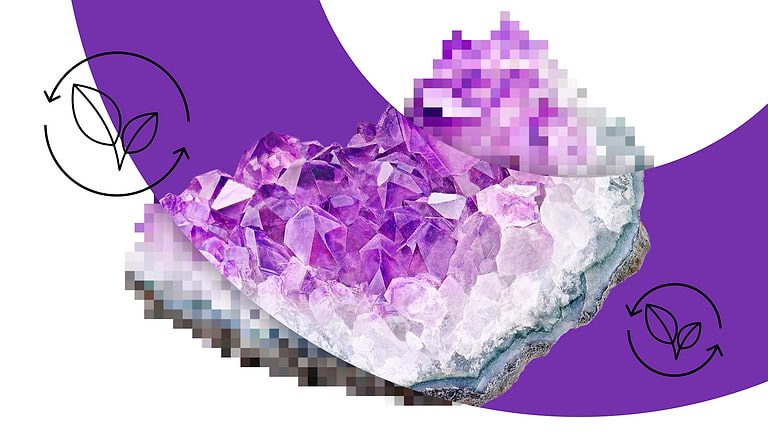SEO eCommerce Website Checklist for High-Traffic Events
Welcome to our SEO checklist tailored for eCommerce websites, especially when planning high-traffic sales events. These strategies are not only essential for a seamless shopping experience, but will also have a lasting impact on your website's SEO performance.
eCommerce SEO for the Long-term
◻ Improve Website Speed: Monitor and fix performance issues to improve user experience and SEO. Magento users can use Amasty+SpeedSize extension Google Page Speed Optimizer Pro. – Anastasia Yaskevich, Content and Communications Specialist, Amasty
◻ Improve Core Web Vitals for Media: E-commerce sites must address media issues that affect loading times and page stability, crucial for good Core Web Vitals. Better site performance leads to improved search rankings, increased user engagement, and higher conversions, ensuring a more enjoyable shopping experience for customers. Most media-related CWV issues can be eliminated with the SpeedSize integration. – Alex Boyko, Engineer, Amasty on How to Speed Up Your Website for Black Friday
◻ Keep Sales Event Pages Live: Even if the event is over, keep the pages up. Remove any internal links, but keep them live so you can reuse them next year. By keeping these pages live, you preserve the SEO value they’ve accumulated, such as link equity and keyword relevance, which can be leveraged for the next year’s event, leading to sustained traffic and improved search rankings. Source: Yoast
◻ Use Descriptors: Include Alt-text and image titles to add textual descriptions of your images, which can help with both SEO and accessibility. Source: Yoast
◻ Resolve 404 Errors and 301 Redirects: Check in Google Search Console for 404 errors and 301 redirects, and resolve them to improve crawler resources and page speed for your visitors. Verify custom 404 error pages are in place and user-friendly.
◻ Identify and Resolve Duplicate Content: Look for instances of duplicate content internally and externally. Implement canonical tags where necessary.

◻ Use High-Quality Images and Videos: Your e-commerce site should have high-resolution images and videos for each product, showcasing various angles. This enhances user engagement and improves your SEO by ensuring search engines accurately index your visuals, making your products more discoverable in image searches, which can lead to increased traffic and better search rankings. If you don’t want to worry about slow-loading, integrate SpeedSize AI media compression & delivery platform.
◻ Secure Your Site with HTTPS: Ensure your e-commerce site uses HTTPS and correctly redirects from HTTP to enhance security. This boosts SEO as Google favors secure sites, potentially raising your search ranking and attracting more traffic.
◻ Check On-Page SEO: Check for proper use of title tags, meta descriptions, header tags, alt text, etc.
◻ Improve Website Crawlability and Indexability: Use tools like Screaming Frog or Moz to crawl the site. Ensure robots.txt isn’t blocking important pages. Check for correct implementation of the “noindex” and “nofollow” tags. Verify XML sitemaps are correctly formatted and submitted to search engines.
From Thomas Almekias, SEO Team Leader @ yellowHEAD:
◻ Prepare Content in Advance: Use Google Search Console performance data from previous years to enhance this year’s event page. Last year’s performance can show you the keywords that worked, or those that got impressions but no clicks. Find keyword opportunities so you can focus your efforts, while always keeping user intent in mind.
◻ Promote the Event through Social Media and Newsletters: Boost awareness and create social signals with direct links to your event page. Social signals can indirectly enhance SEO by boosting traffic and user engagement. Newsletters drive repeat visits and extended engagement, benefiting SEO. Plus, shared content can create backlinks, improving your site’s search authority.
◻ Use Product-related Structured Data: This makes your search results more detailed, showing ratings, reviews, and prices. It helps search engines better index your site, increasing visibility and improving click-through rates as customers see important information immediately.
◻ Redirect Old URLs: Use a 301 redirect to push traffic from outdated event pages to the new one. This boosts SEO by transferring link equity to the new page, ensuring consistent rankings and benefiting from existing backlinks, which can lead to better search visibility and more organic traffic.
◻ Strengthen Internal Linking: Make sure to add internal links, especially dominant ones, from the main menu and homepage. Add the event page to the sitemap.xml. This helps search engines index your site, improves page authority, and enhances search visibility.
◻ Mobile SEO: Ensure the site is mobile-responsive. Check mobile page speed and user experience. Verify mobile-friendliness using Google’s Mobile-Friendly Test.
The above SEO tips are essential for eCommerce websites gearing up for high-traffic sales events. It ensures a smooth shopping experience and boosts long-term SEO performance – but its just a taste. By starting with these strategies, your site will be more likely to succeed during special events and continue to thrive in the competitive eCommerce arena. For more tips, use our comprehensive checklist for all teams!
Read: The eCommerce Website Guide for High-Traffic Sales Events




